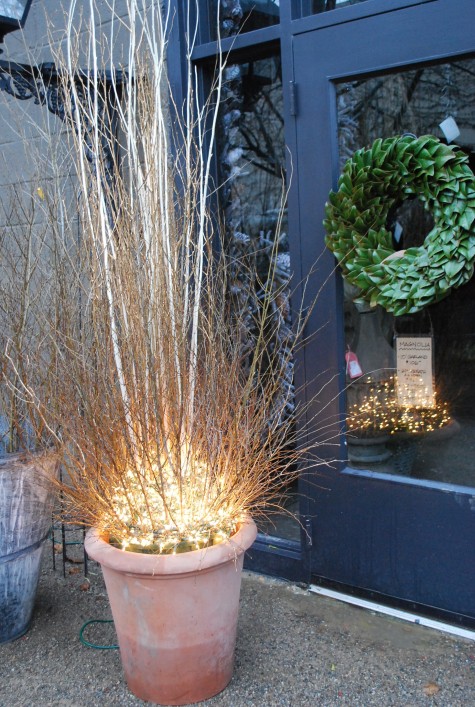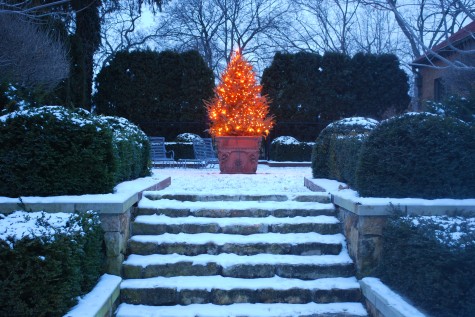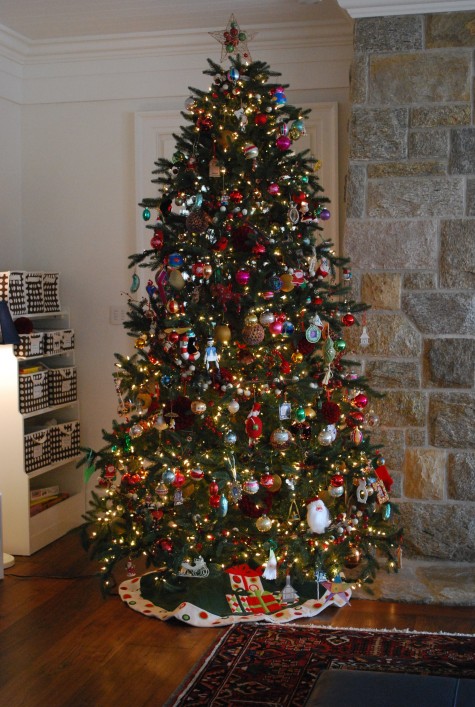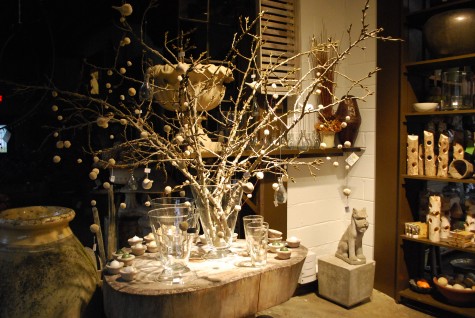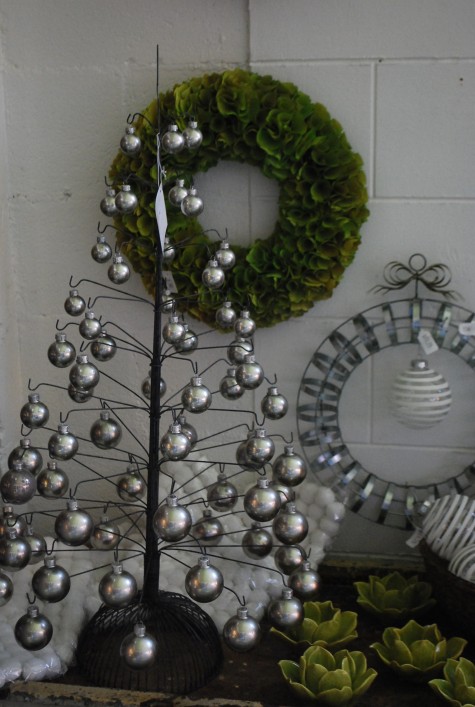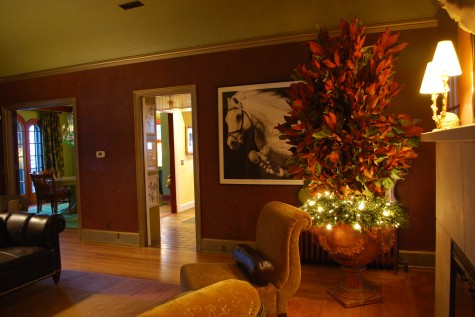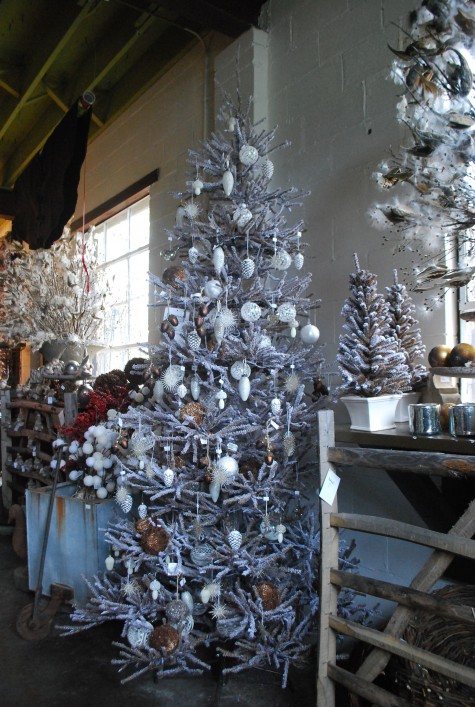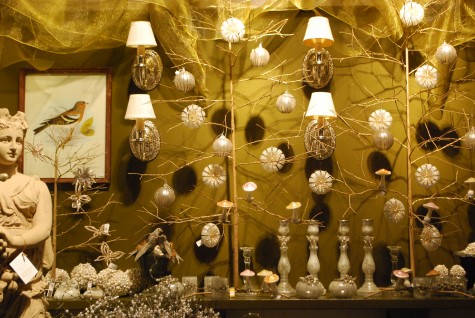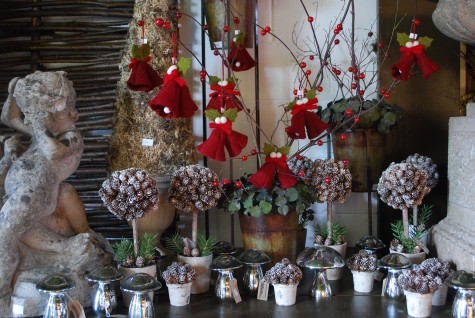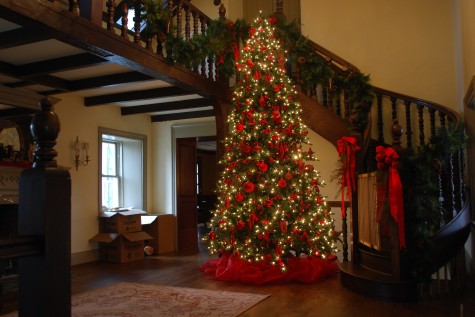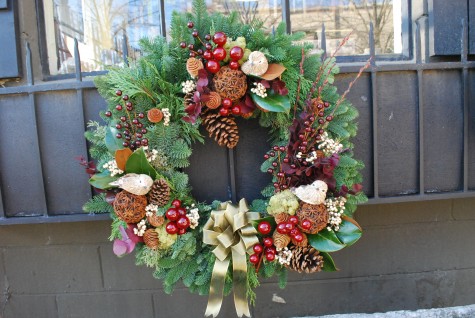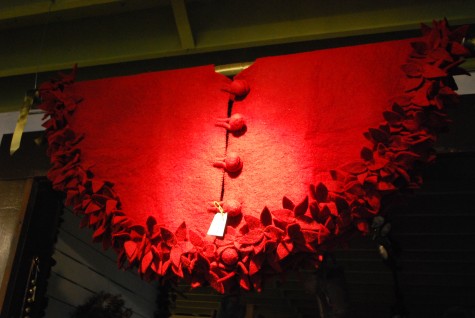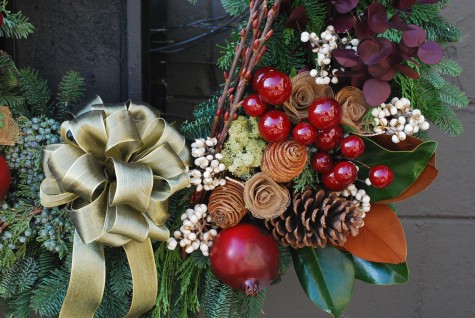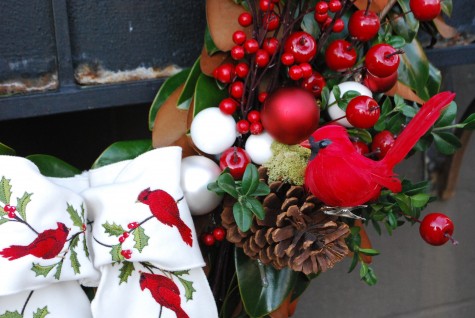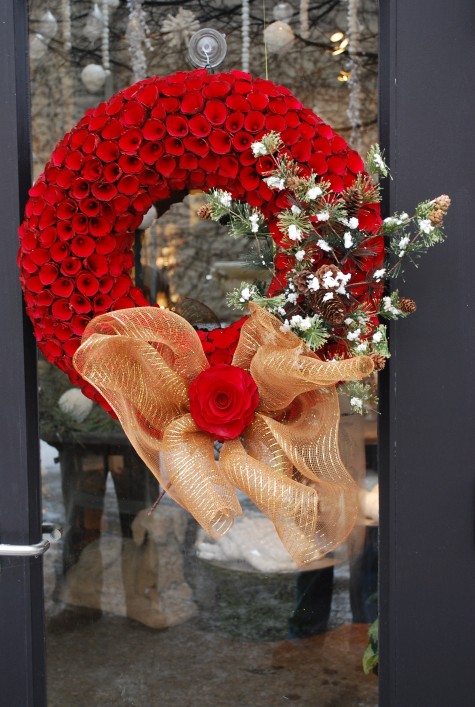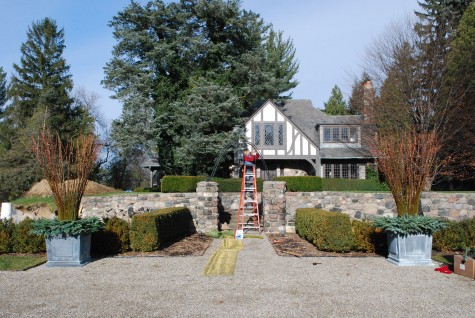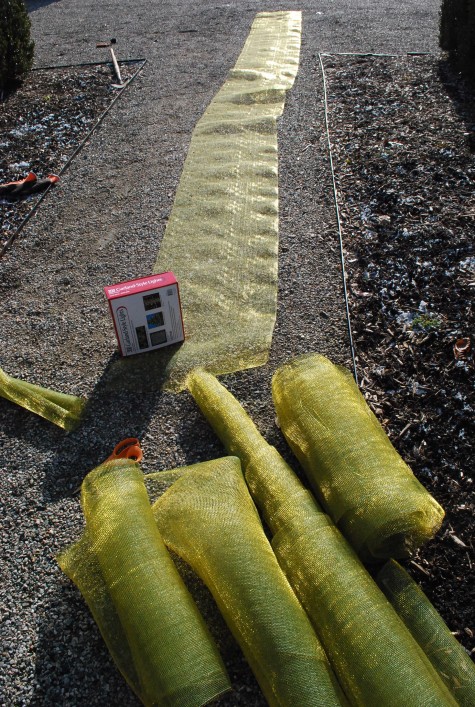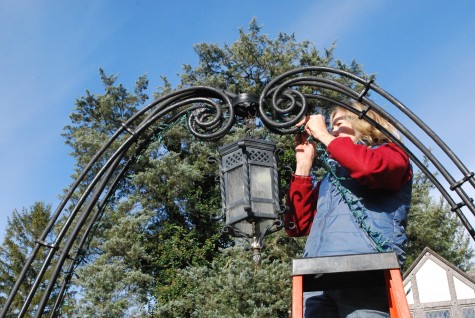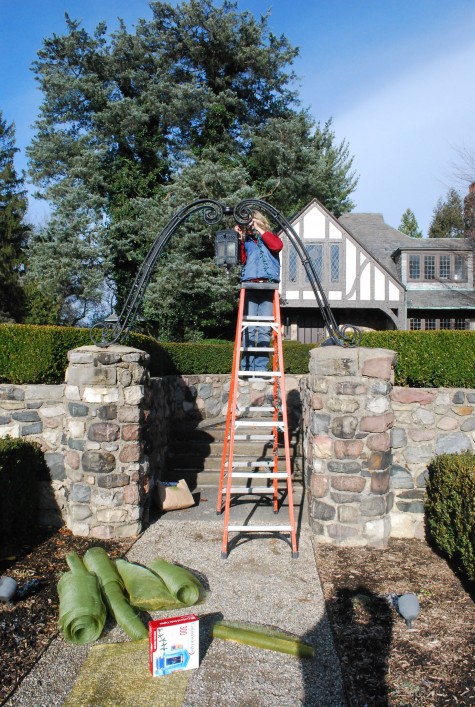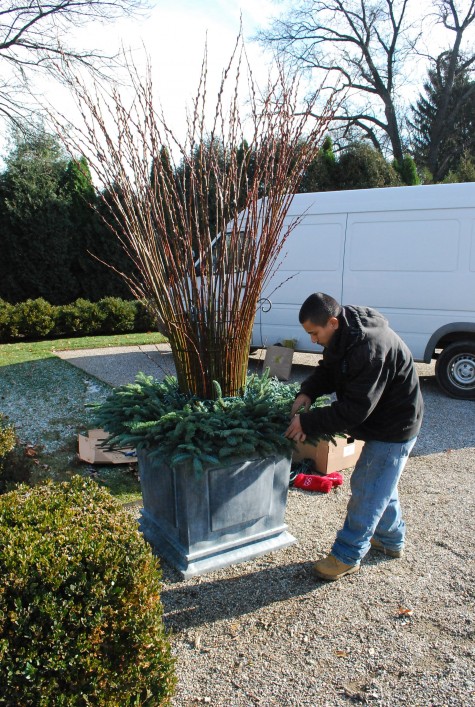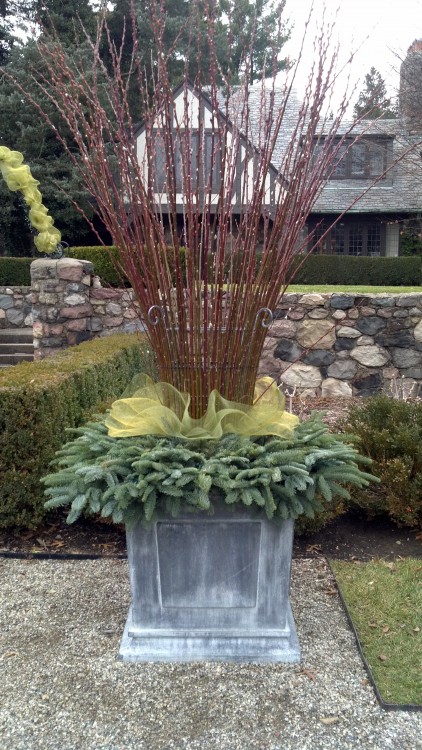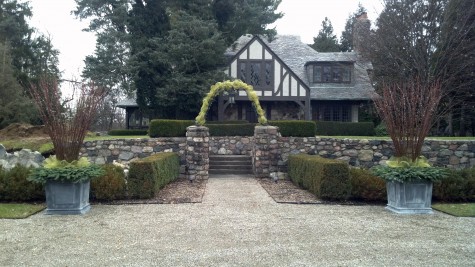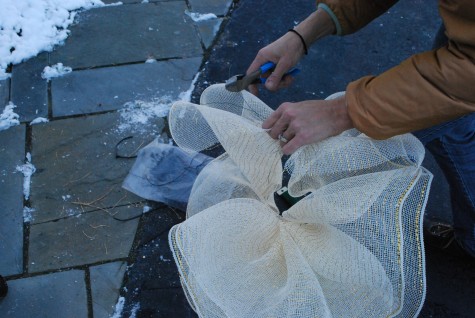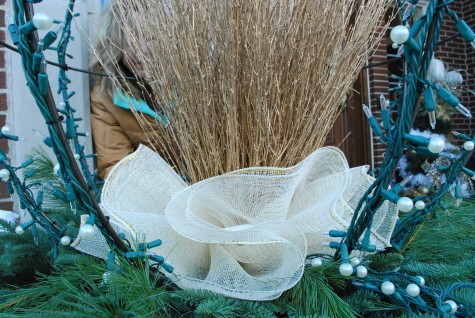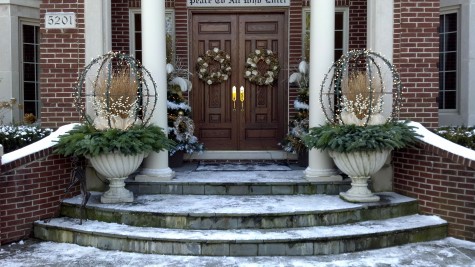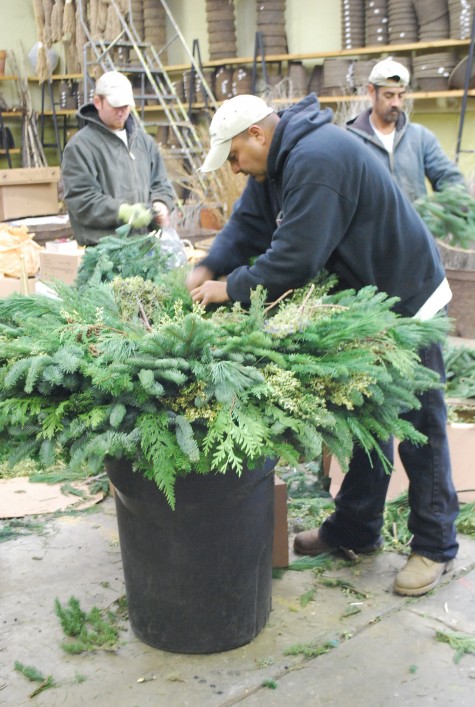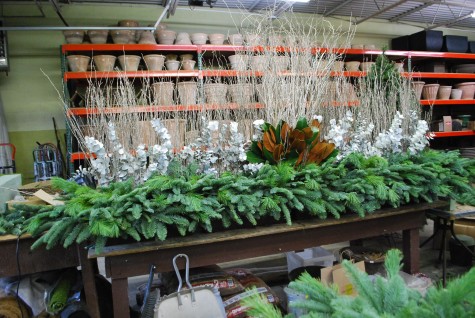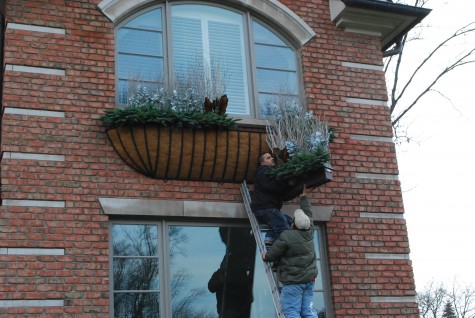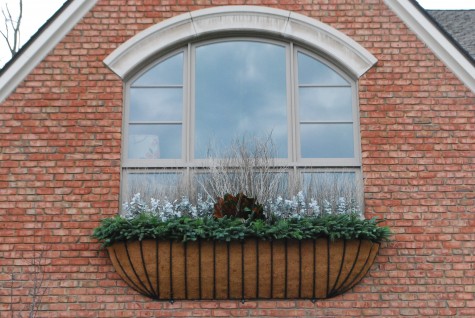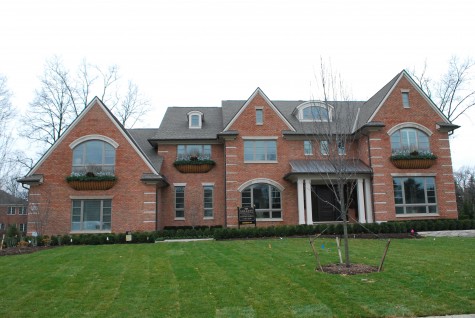The history of the Christmas tree is long, and well documented. How amazing-people from very different backgrounds and points of view bring a tree indoors, for the holidays. As a landscape designer, this process not only interest me-it enthralls me. A decorated Christmas tree is one of the most iconic holiday expressions imaginable. My late season landscaping makes the transition to the expressions of the holiday season without much fuss-I am still installing trees in December. Farmers who grow Christmas trees, I admire them in the same way that I admire farmers who grow brussel sprouts, or tomatoes. Do I see holiday decorating as a form of gardening-oh yes.
These holiday trees dressed in glass ornaments and wired gold bows are simple clusters of branches fixed to a second floor railing. They are a personal and individual interpretation of a Christmas tree. This expression suits the taste of my client, and looks great in her house. I have other clients with fairly modern tastes that still want a very traditional holiday tree. Sometimes there are children and family involved in that decision. But this is a matter of choice, not necessity. All that alternative tree takes is an alternative point of view.
Rob’s constructions of branches and lights recasts the tree as a burning bush. It would look great inside or out. With ornaments, or without. Once a decision is made to take another direction, an idea can evolve.
This past winter, I sunk a cut Christmas tree into the pot in my side garden. 8 strands of gold lights got wound around that tree. This was my garden Christmas tree. I so delighted in the light that drenched the south side of the house. I will confess I lit this tree until the end of February. If it haqdn’t been visible from the sidewalk, I probably would have kept it lit through March.
I put up and decorate this tree for a client with small children every year. This tree revolves around ornaments created and chosen by their children. Other ornaments symbolize their family history. Every year, the Christmas tree is laden with the evidence of their family history. You would be surprised at how many adult children do not want there parents to change anything about the family tree. Those kids are clearly kids who have good memories of their childhood holiday.
Rob’s latest idea of a holiday tree-astonishing. He arranged a number of poplar branches in a glass vase. He went on to hang wood bird ornaments, and cream colored pompom garlands on those branches. Spare, architectural, and dramatic, it features the gnarled branches and elongated buds of the poplar.
A Christmas tree taken to the minimum- this diminuitive steel wire interpretation of an evergreen holiday tree looks great, hung with pewter colored glass ornaments.
I myself change up, and reinterpret the Christmas tree, every year. I like to try new things at the holidays, as much as I like to plant my containers differently every year. I stuffed tall cut magnolia branches into a foam form set in a concrete footed urn. The classic Italian style of the pot looks good in my 1930’s vintage house. Boxwood and lights at the bottom completed the look.
This artificial tree is incredibly good looking to my eye. It makes no pretense of copying the look of a live tree-this I like. It is a sculptural interpretation of a tree. The brown/olive color of the branches reminds me of a dead hemlock. The branches are sparse, making it easy to hang lots of ornaments, or none at all. It reminds me of the Victorian feather trees so popular in the late 19th century.
These metal Christmas trees are tall, and have but a few branches. They look great with just a few ornaments. The size makes it possible to have a tree in a small space. The shelf where these trees sit is but 12 inches wide. The flexible metal branches make it possible to have all of the bulk of the tree in the front, and none in the back.
kkk
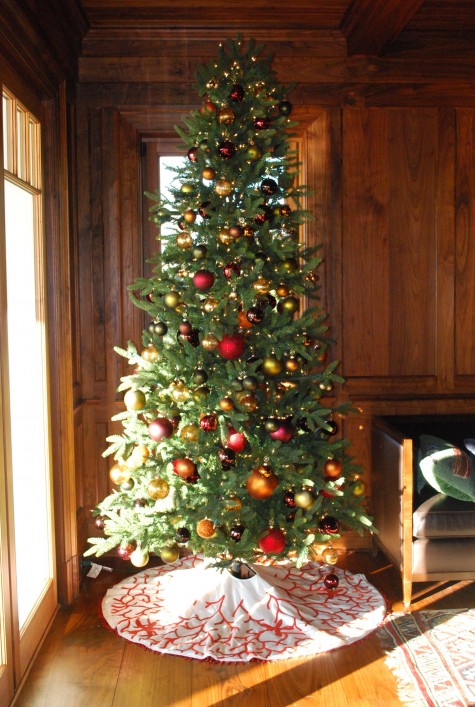
kThis client likes having a Christmas tree in his study. The glass ornaments are simple, and jewel colored. The dark olive green, burgundy, brown gold is an alternative color scheme.
This little tree is comprised of small scale branches set in a vintage bucket. Small berries were glued to the stems. Short stems of eucalyptus were stuffed into the base. A collection of red felt bells topped in holly is the only other decoration. It doesn’t seem to need anything else. Just to its left, a cardboard cone covered in dried lichens. I like this tree too.
What will I do at home this year? Last years holiday tree was in fact a holiday buck. I put a sheet of plastic on the floor, and puddled 50 feet of evergreen roping around the Buck. Several sizes of lights are kept company by a few lichen balls. A collar of oversized sphere lights completed the look. Deciding what to do this year-that is much more than half the fun of it.


